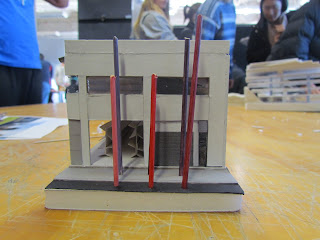Above shows various views of the finished joints, which then need to be soldered.
Above left is the soldering iron in its natural form, it is preheated-connected to wall socket-and combined with solder to make the joint joined and solid.
The soldering usually leaves a burn mark, which can be easily sanded down.
Soldering metal and liquid used for pre-soaking the sanded down metal edges.
The above three photos show the main bending and cutting machines.
I took it home, and began sanding down the solder with some standard sandpaper, then once all the solder was sanded to the right amount I painted it with two coats of white primer, then two coats of white spray paint. Once it was all dry I peeled back the cover sheets on the perspex, and with some help of the family stuck all the black 5% tint on the Screen. I would have liked it to be a reflective surface, but time meant ordering the expensive reflective cover sheet meant i had to stick with the 5% black tint-used for cars-was too late...but hey, maybe the black and white-frame-will look better? This of course changes the idea behind it slightly, but this is what happens...Below are the final photos of the 1:1 model made from aluminum metal framing, 3mm perspex, and white spray paint with white primer and gloss finish, a strong glue was used to stick the roof down.
Above three photos show the metal being primed, with white acrylic paint, then spray painted over and over again (roughly three times) to give a nice solid, even white coat. It was then sprayed with gloss to harden the coatings together.
Above shows the glue used to stick down the roof, lets hope it stays that way, not the best trusting glue...look at the catch phrase...
With the roof stuck down, it all came together, even if it isn't perfect, which it isn't, this was more of a learning curve than trying to claim perfection on a 1:1 model that i actually have never worked with before.
The black tint is purple? Oh well, it still looks pretty good.
Some more shoots of the final product.
What did i learn for the past few weeks? Well, I learnt about patch dynamics, weather and materials, how to make metal joints and how to solder, the idea of working with the whole space-in-turn with a small, important detail of the buidling, also about augmented reallity, and found a new artist who I think does some amazing work-Ben Heine. And i learnt that building even a simple model and prove to be somewhat very expensive, for both time and money...












































